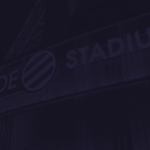As offices change and teams grow, the way we manage workspaces must change too.
In 2025, businesses are no longer guessing how to use their office space. They’re using smart tools to track, manage, and improve how their workspaces are used every day.
The tools they’re using?
They’re called workspace management software and workplace management software and they’re becoming essential.
If your business is growing, hybrid, or just trying to stay organized, here’s why investing in this type of software is one of the smartest decisions you can make.
What’s the Real Difference Between “Workspace” and “Workplace” Management?
The terms sound similar, but they do have slightly different meanings.
- Workspace management software focuses on managing desks, meeting rooms, hot desks, and the physical layout of the office.
- Workplace management software takes a broader view including workspace bookings, visitor management, safety protocols, office resources, and even remote team planning.
Together, they help you manage how people interact with your space whether they’re in the office daily or coming in once a week.
Why Smart Companies Are Already Using It
Companies across industries are realizing that managing space manually isn’t sustainable.
Here’s what they’re gaining:
- Clarity: Know exactly which desks, rooms, or zones are available at any time
- Efficiency: Reduce wasted space and improve how offices are used
- Safety: Track capacity limits, cleanings, and visitor logs
- Experience: Make it easy for employees to book a spot, check in, or plan a visit
- Data: Use reports to plan future space, reduce costs, or move offices smartly
Real example:
A company with 300 employees went hybrid in 2023. Before using workspace software, they had confusion daily no-shows, double bookings, and unused meeting rooms. After switching to a digital booking system, office usage became 30% more efficient, and employee satisfaction scores improved.
Problems This Software Solves
Still unsure if you need it?
Here are common problems many businesses face and how this software helps:
| Problem |
| · Employees don’t know where to sit |
| · Meeting rooms are always “booked” but empty |
| · Office feels too crowded or too empty |
| · Remote workers need space on certain days |
| How the Software Helps |
| · Live desk and room booking tools |
| · Real-time updates and check-ins |
| · Capacity tracking and reports |
| · Flexible scheduling and mobile access |
| · Data to guide your real estate decisions |
This isn’t just about saving space. It’s about creating a better working experience for your entire team.
Key Features to Look For
When choosing the right workspace management software or workplace solution, look for tools that offer:
- Desk and room booking system
- Interactive office maps or floor plans
- Mobile check-in and booking
- Visitor management and approvals
- Safety tracking (cleaning, distancing, alerts)
- Custom permissions (for teams, guests, admins)
- Integration with Microsoft 365 or Outlook
- Easy setup with minimal IT effort
Smart companies aren’t choosing the most complex tool they’re choosing the one that their people actually use.
Who Should Be Using It?
This software isn’t just for huge corporations.
It’s great for:
- Hybrid teams
- Growing startups
- Companies with multiple locations
- Offices with limited space
- Businesses planning a move or remodel
- HR and admin teams managing visitors or seating
Whether you have 20 people or 2,000, good space management helps people feel supported and reduces office chaos.
Conclusion:
Managing an office is no longer about square footage.
It’s about helping your people do their best work wherever they are.
By using workplace and workspace management software, you’re not just tracking desks. You’re improving how your team connects, moves, and works every day.
That’s why smart companies are already investing.
And that’s why it might be your turn next.
Explore a solution that’s flexible, easy to use, and built for modern teams:
Beyond Intranet’s Workspace Management Software















